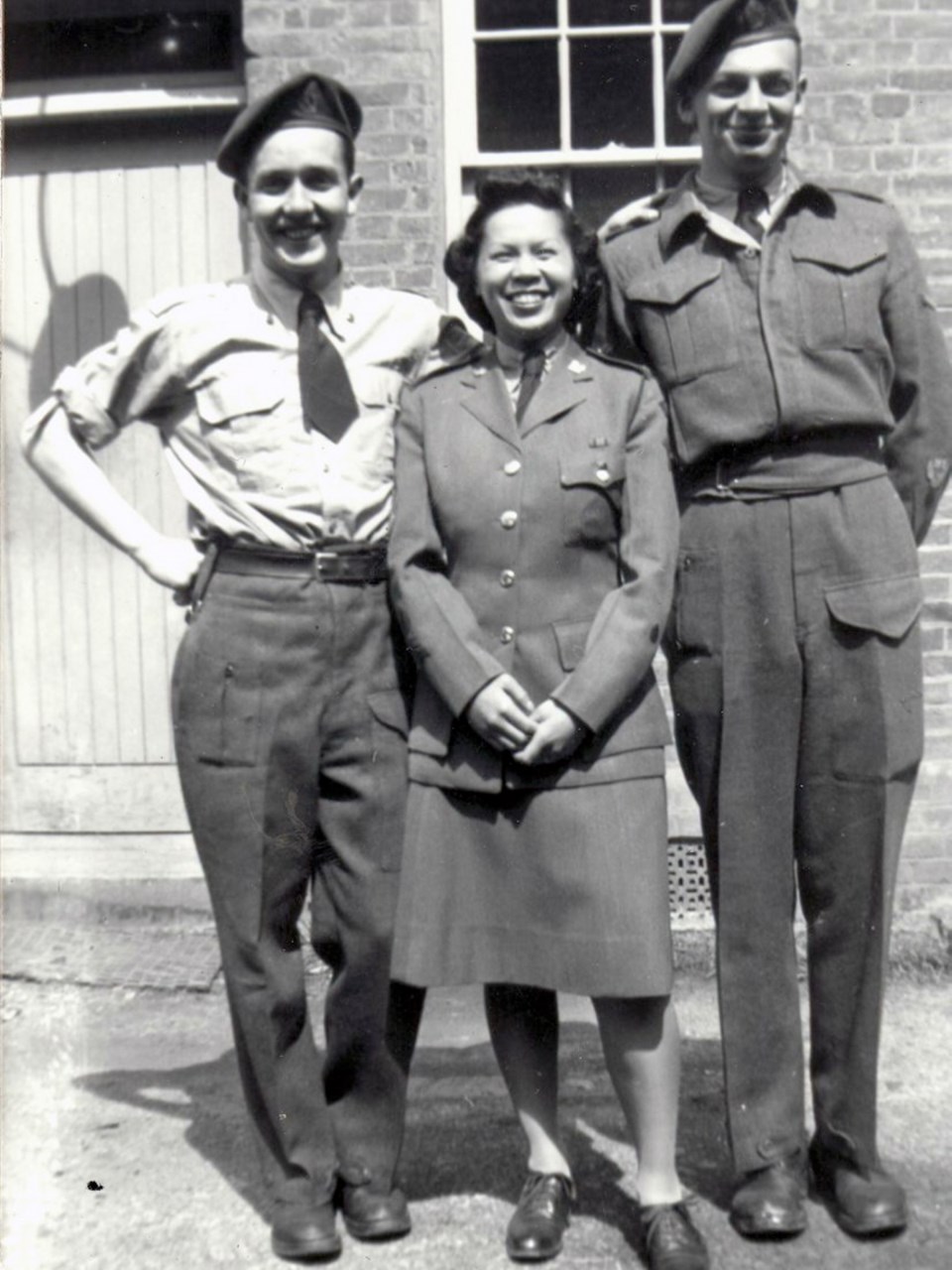When Gordon Quan joined the army in 1944, he wanted to fight for his country — Canada.
After all, Quan was born in Cumberland and considered himself Canadian in every way.
So it was a surprise to learn in 1947 — two years after the Second World War ended — that Canada was only then granting Chinese-Canadians the right to vote. The federal government had agreed to repeal the discriminatory Chinese Immigration Act of 1923.
“We didn’t even know about any of the stuff until 1947,” Quan, now 88, said in an interview.
“When I joined the army, I was 18 years of age and born in Cumberland and thought I was Canadian,” said the Victoria resident. “We were all going to fight for our country and we didn’t know about the other stuff.”
Wartime experiences and contributions of men and women, including Quan, will be remembered beginning Thursday at the CFB Esquimalt Naval and Military Museum. It plays host to a special exhibit on the experience of Chinese-Canadian servicemen and women.
The exhibit was originally the work of the Chinese Canadian Veterans Military Museum Society in Vancouver and assisted by the Canadian War Museum in Ottawa.
Clare Sharpe, CFB Esquimalt museum exhibit designer, said local artifacts, pictures and stories have been added, including photographs and uniforms belonging to Mary Ko Bong, a member of the Canadian Women’s Army Corps, who enlisted in 1943.
Ko Bong was an instrument technician but also sang and danced for the troops.
Valerie Ko, 69, of Victoria, is a niece of Ko Bong and met her a few times, but didn’t know her very well. “I know she was musical,” said Ko, who was invited to the exhibit’s opening. “She played piano and danced.”
Quan’s war experience began with training in Saskatchewan, where he was told the British were preparing for a big push against the Japanese in southeast Asia, in what was then known as Burma, now Myanmar.
But to join that effort he would have had to transfer to the British Army. So Quan was sent to London to sign up, and then on to India for advanced training in the British Army, S.E. Asia Command.
Quan was trained in demolition work to be part of a small group of fighters creating havoc, often behind Japanese lines in special operations.
“We didn’t do mass destruction,” he said. “We operated in small groups, maybe 15 of us; we lived together and we fought together.
“It was a special group,” he said. “To be honest with you, it was a suicide squad. If you ever got caught, you would be sorry.”
Eventually he was sent to the jungles of what was then Malaya, where his group was ready for action.
“We didn’t even know the war had ended until five days after it happened,” Quan said. “I was in the jungle, ready to fight and this officer came in and said, ‘Boys, we are going home. They just dropped A-bomb.’
“It if wasn’t for the A-bomb, I don’t think I would be here today.”
On a quirkier note, his memory has been preserved in Canada in two languages, Cantonese and English. The names also appear on two memorial plaques honouring Chinese-Canadian veterans, one in Vancouver and the other in Victoria.
His original Chinese name, Juy Kong, was printed on his birth certificate. But when he arrived in primary school, his teacher proclaimed it would be too hard to pronounce, and said he would be called Gordon Quan instead.
When he enlisted, the army recorded the name on his birth certificate, his Chinese name of Juy Kong — the name that appears on the plaque in Vancouver.
But Quan had taken to signing his name as Gordon J.K. Quan — the name on the Victoria plaque.
He said he isn’t bitter or angry about the mix-up or Canada’s slowness in granting full citizenship to Chinese-Canadians.
“Like everything else in this country, there are ups and downs,” he said.
But he likes to think the benefit is something won on behalf of people coming after him.
“When we came home there was this big fight for our rights,” he said. “It was a benefit, not for me but for Chinese people coming from China. If we hadn’t got those rights, I don’t think those people coming from Hong Kong or China … I don’t think they would have got the rights.”
The exhibit of the Chinese-Canadian veterans opens with a ceremony at 1:30 p.m. Thursday at the Naval and Military Museum at CFB Esquimalt. Admission is by donation.
For more information, go to navalandmilitarymuseum.org.
